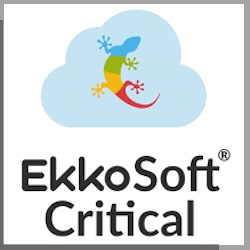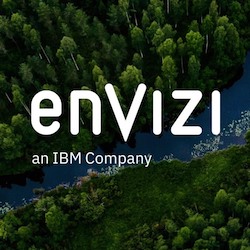The consistent, high-usage profile of data centers may lead us to believe that cloud data centers are markedly more sustainable than private cloud data centers. But data shows that public cloud now has a greater carbon footprint than the airline industry — a notoriously carbon-intensive segment.
A single public data center can consume the same amount of electricity as 50,000 homes. A public data center’s annual consumption of 200 terawatts/hour is more than some nation-states’ annual consumption. Rising consumer pressure and new EU regulatory reporting requirements, such as Germany’s Energy Efficiency Act that mandates a 26.5% reduction in carbon emissions from 2008 levels by the year 2030, have opened the door to GreenOps.
What Is GreenOps?
GreenOps is the practice of minimizing a cloud environment’s carbon footprint through the efficient use of cloud resources. This means far more than just reducing the energy required to power a data center and the water used to cool it. Other factors, such as the physical footprint of the data center, type of installed power, size of data volumes, temperature set points in the data center, reuse of secondary heat, and even renewable energy, all contribute to the calculation of CO₂ emissions. By September 2024, the Data Centers in Europe reporting program, a European Energy Efficiency Directive subsidiary, will require European organizations to report on all of these factors.
While Europe is leading the charge, other regulations and initiatives around the world promote more sustainable energy consumption models: the SEC’s Climate-Related Disclosures/ESG Investing in the US, the National Renewable Energy Development Plan in China, the Environmental Impact Assessment (EIA) Regulations, and the National Solar Mission in India, to name but few.
The Intersection Of FinOps And GreenOps
At a high-level view, GreenOps looks a lot like FinOps. After all, the two share the same goal: efficient cloud usage. When a company maximizes efficiency, two obvious effects are 1) lower costs and 2) lower carbon emissions. The same FinOps tasks of right-sizing, storage tiering, deleting idle and unattached resources, and scheduling compute off time are also used in GreenOps to achieve lower carbon emissions. Closing out last year’s AWS re:Invent, Werner Vogels reinforced this sentiment when he said that “Cost is a close proxy for sustainability” — a ringing validation of the tightly integrated relationship between FinOps and GreenOps.
So What Now?
New EU regulatory reporting requirements, along with increased consumer and shareholder pressure, will create the case for more efficient and therefore more sustainable use in cloud worldwide. For example, new technologies that use water instead of air to cool data centers have shown up to a 95% reduction in CO₂. Still, sustainability isn’t solely the public cloud provider’s responsibility. Forrester recommends that companies take the following actions:
- Reduce emissions with monitoring. Use a carbon monitoring tool such as Cycloid’s GreenOps, SAP’s Green Ledger, Google’s Carbon Footprint tool, or the AWS Customer Carbon Footprint Tool. Start by measuring the current state to identify opportunities for reducing CO₂ emissions, whether with native tools from your cloud vendor or with solutions that encompass your multicloud environment.
- Architect your workloads with less carbon intensity. Leverage workload placement tools that account for the carbon intensity of specific cloud regions. Choose specific regions that use more sustainable energy. AWS’s US-East (Northern Virginia, Ohio), GovCloud (US-East, US-West), and Europe (Ireland) consume all of their electricity using renewable energy. Google Cloud’s data centers in Montreal, Toronto, and Santiago use more than 90% or more carbon-free energy.
- Minimize data transfer across regions. Aside from the obvious cost of egress fees, the carbon impact of data transfer can be as high as 3 kg. CO2e/GB. For cases where redundancy or uptime isn’t a major priority, avoid unnecessary data transfer across regions.
- Demand transparency from your public cloud provider. Currently, Google Cloud and Microsoft Azure report all scope 1, 2, and 3 greenhouse gas (GHG) emissions. AWS reports only scope 1 and 2; it made promises to make scope 3 GHG emission data freely available but has yet to do so.
- Use managed cloud services to automate away waste. Managed services such as AWS Lambda or Azure Functions mask back-end complexity for developers. They also eliminate wasted usage by turning off idle compute and thereby lowering costs and carbon emissions.
These are some of the easier immediate actions that organizations can take to minimize their carbon footprint and maximize the value of their investment in cloud but not the only ones. We will be researching further on this topic over the coming months. Come talk to us if you want to know more about this space or you want to share your experiences with us.
Set up an inquiry or guidance session with Dario Maisto (GreenOps and cloud sustainability) or Tracy Woo (FinOps) to learn more.
Co-authored by Forrester Senior Analyst Dario Maisto and Principal Analyst Tracy Woo. Read Forrester guest blogs here.




